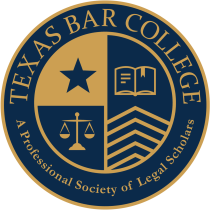Expected Changes in Employment Law Under President Trump’s Second Term
/As President Donald Trump reclaims the White House, employers and employees alike anticipate significant shifts in labor policies. Based on his previous term and campaign promises, these changes could impact areas such as workplace regulations, immigration, and diversity initiatives.
1. Regulatory Reforms and Agency Leadership
One of the hallmark changes expected involves regulatory slowdowns and a pivot in leadership at key labor agencies, such as the National Labor Relations Board (NLRB) and the Equal Employment Opportunity Commission (EEOC). Under Trump’s administration, agency chairs aligned with pro-business views are likely to oversee policy. This change signals potential reversals of Biden-era regulations on overtime, independent contractor definitions, and more. While some proposed rules from the current administration were met with court challenges, a rollback of these initiatives is probable, resulting in reduced compliance burdens for employers but potentially fewer protections for workers.
2. Influence of Trump-Appointed Judges on Employee Rights
The appointment of federal judges during Trump’s presidency will have long-lasting implications for employment law. These judges, typically aligned with conservative interpretations of statutes, may affect the outcomes of key employment cases. Courts could lean towards stricter interpretations of laws governing collective bargaining, workplace discrimination, and employer liabilities. This could result in a judiciary less receptive to expansive interpretations of worker protections under the Fair Labor Standards Act, Title VII of the Civil Rights Act, and other regulatory frameworks. Employers might experience a more favorable legal climate, whereas employees may find it harder to win cases involving broad labor rights or discrimination claims.
3. Immigration Policies and Workforce Impacts
Immigration policy will be a central focus, with a renewed emphasis on enforcement through measures like workplace raids and an increase in I-9 audits. The construction, hospitality, and manufacturing sectors, which rely heavily on immigrant labor, may experience workforce disruptions due to stricter regulations and potential deportations. A clampdown on immigration is expected to lead to tighter labor markets, particularly in industries dependent on a diverse workforce.
4. DEI Initiatives Under Scrutiny
Diversity, equity, and inclusion (DEI) efforts face new challenges under Trump’s administration. His previous term saw the curtailment of DEI training in federal settings, and similar initiatives might extend to private-sector businesses, especially those connected to federal contracts. The EEOC, under anticipated leadership changes, could narrow the scope of permissible DEI programs, placing certain corporate training initiatives under heightened scrutiny. Such actions could affect how organizations approach inclusion and diversity policies to remain compliant.
5. Worker Rights and Union Relations
Trump’s complex relationship with labor unions and worker rights is set to continue, with potential limitations on union organizing. Policies to make it easier for employers to deter union activities may resurface, reflecting previous administration tactics aimed at reducing collective bargaining power. Conversely, legislative support for voluntary negotiations between employees and employers, as highlighted by proposals like the Teamwork for Employees and Managers Act, may develop, fostering alternative dialogue frameworks that bypass traditional union channels.
6. Wage Policies and Worker Benefits
President Trump has shown ambivalence toward federal wage increases, having previously supported and then retracted positions on minimum wage hikes. The current landscape suggests that while direct action on wages may be limited, policies affecting tipped wages and overtime pay might emerge. The elimination of taxes on tipped wages is one such proposal, appealing to service industry workers but raising questions about potential revenue impacts on public programs. Proposals for family leave, advocated by figures like Vice President-elect J.D. Vance, may offer targeted benefits for working parents, signaling nuanced shifts toward supportive benefits without comprehensive legislative change.
7. Economic and Industry-Specific Policies
Economic strategies under Trump’s presidency are likely to prioritize domestic job creation through tariffs and fossil fuel initiatives. A proposed blanket tariff on imports aims to boost American manufacturing but poses risks of supply chain disruptions and cost increases. Sectors tied to renewable energy may also feel the strain as federal focus shifts toward traditional energy sources like oil and coal.
Conclusion
President Trump’s second term presents an employment landscape marked by pro-business reforms, a tougher stance on immigration, reevaluated DEI programs, and selective economic policies. While some measures may simplify regulatory compliance for employers, they also pose challenges, including potential workforce shortages and heightened scrutiny over diversity initiatives. Both employers and employees will need to stay vigilant and adaptable as these anticipated changes unfold, shaping the next phase of workplace dynamics in the United States.








